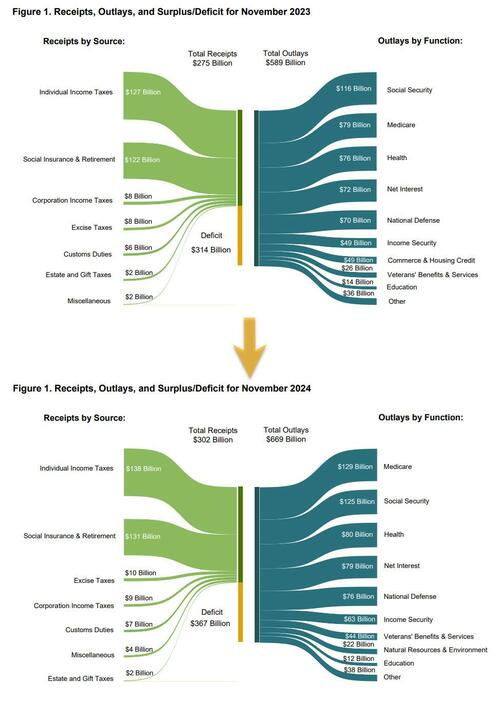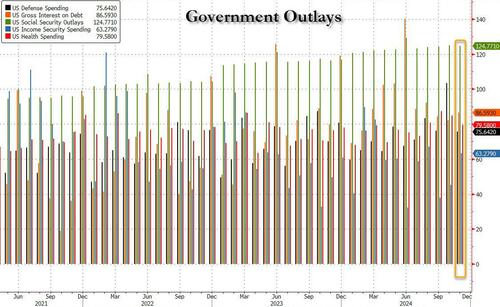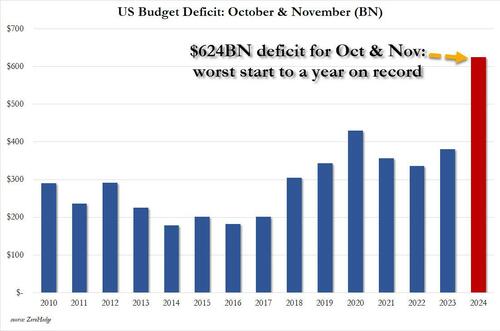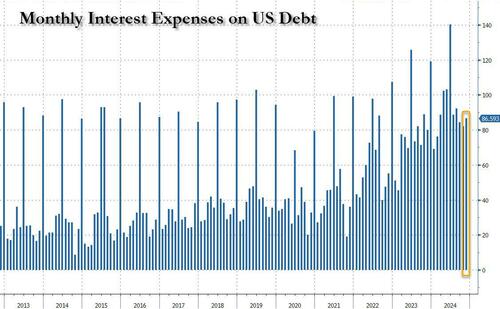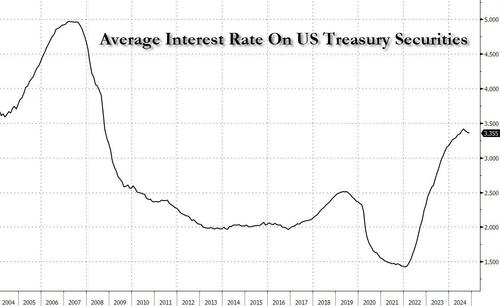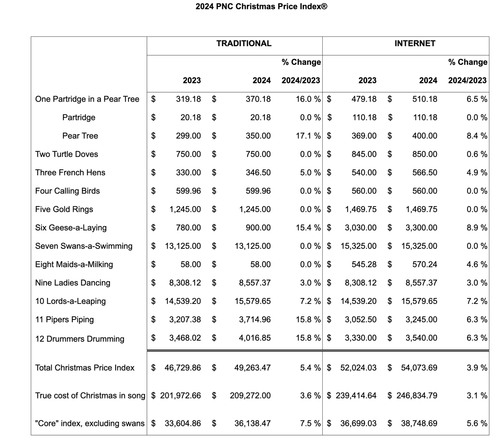Authored by John & Nisha Whitehead via The Rutherford Institute,
“Rights aren’t rights if someone can take them away. They’re privileges. That’s all we’ve ever had in this country is a ‘Bill of Temporary Privileges.’ And if you read the news, even badly, you know that the list gets shorter and shorter.”
– George Carlin
Disguising its power grabs in the self-righteous fervor of national security, the Deep State has mastered the art of the bait-and-switch.
It works like this: first, the government foments fear about some crisis or threat to national security, then they capitalize on it by seizing greater power and using those powers against the American people.
We’ve seen this play out over and over again.
The government used its so-called War on Terror to transform itself into a police state.
Then the police state used its War on COVID-19 to claim lockdown powers.
All indications are that the government’s promised War on Illegal Immigration will be yet another sleight of hand that allows the powers-that-be to engage in greater power grabs while weakening the Constitution.
Therein lies the danger of the government’s growing addiction to power.
Whatever dangerous practices you allow the government to carry out now—whether it’s in the name of national security or protecting America’s borders or making America healthy again—inevitably, these same practices can and will be used against you when the government decides to set its sights on you.
The slippery slope that starts with illegal immigration has all the makings of a thinly veiled plot to empower the government to become the arbiter of who is deserving of rights and who isn’t.
That quickly, we could find ourselves navigating a world in which the rights enshrined in the Constitution for all persons living in the United States are transformed into privileges enjoyed only by those whom the government chooses to recognize as legitimate.
By persuading the public that non-citizens, particularly illegal immigrants, do not enjoy the same inalienable rights as law-abiding citizens (a fact refuted by the Constitution and every credible legal scholar in the country), the Deep State is leading us down a road in which all rights are transitory.
This is how you establish a hierarchy of rights, contingent on whether you belong to a favored political class.
Be warned.
At such a time as the government is emboldened to flip that switch and appoint itself the ultimate authority on which protected class of individuals gets to enjoy the rights enshrined within the Constitution, the dividing line will not be between legal citizens and illegal immigrants.
It will not even be between Republicans and Democrats.
Rather, the purpose of that line of demarcation will be to distinguish the compliant, obedient, subservient vassal of the American police state (the so-called Loyalists) from everyone else.
We’re almost at that point now.
This is how tyranny rises and freedom falls.
Here are some of the inherent dangers in allowing the government to become the arbiter of who is deserving of rights:
It leads to the erosion of universal rights. The Bill of Rights was designed to protect the fundamental rights of all persons within the United States, regardless of their citizenship status, race, religion, or any other factor. When the government starts making distinctions about who is entitled to these rights, it undermines the universality that makes them so powerful. This creates a slippery slope where rights become privileges, subject to the whims of those in power.
It gives rise to authoritarianism. History is replete with examples of governments that consolidated power by first stripping away the rights of marginalized groups. Once the principle of universal rights is breached, it becomes easier to target other groups deemed “undesirable” or “unworthy.” This paves the way for authoritarianism, where the government dictates who enjoys freedom and who does not.
It creates a two-tiered society. A hierarchy of rights inevitably leads to a two-tiered society, where some individuals enjoy full protection under the law while others are relegated to second-class status. This fosters resentment, division, and social unrest. It also creates a vulnerable population that can be easily exploited and abused.
It undermines the rule of law. The rule of law is a fundamental principle of a just society. It means that everyone is subject to the same laws and that no one is above the law. When the government selectively applies the law based on arbitrary criteria, it undermines the rule of law and erodes trust in the legal system.
It chills free speech and dissent, i.e., the right to criticize the government. When people fear that their rights are contingent on their political views or social status, they are less likely to speak out against injustice or challenge the government. This chilling effect on dissent stifles free speech and creates a climate of fear and conformity.
It contributes to the loss of moral authority. A nation that claims to champion liberty and justice for all loses its moral authority when it denies those principles to certain groups within its borders. This undermines its standing in the world and diminishes its ability to promote human rights abroad.
Remember, the erosion of inalienable rights often starts subtly, with the government chipping away at the edges of those rights for specific groups.
The pattern is subtle at first, with government officials exploiting fear and prejudice in order to target groups that are already marginalized or perceived as “outsiders.” Incrementally, the net is cast wider and wider, so that by the time the injustice is widespread enough to inspire outrage in the greater populace, it’s too late to resist.
Historic examples abound of how the government has manufactured a blatantly unjust hierarchy of rights in order to diminish certain segments of society. These run the gamut from slavery and the persecution of Native Americans to the Japanese internment camps and segregation.
More recently, we’ve seen this tactic deployed in order to justify policies that run afoul of the Constitution, ranging from immigration policies and mass surveillance programs to SWAT team raids, voting rights, and the erosion of due process.
Clearly, Martin Niemöller’s warning about the widening net that ensnares us all, a warning issued in response to the threat posed by Nazi Germany’s fascist regime, still applies.
“First they came for the socialists, and I did not speak out—because I was not a socialist. Then they came for the trade unionists, and I did not speak out— because I was not a trade unionist. Then they came for the Jews, and I did not speak out—because I was not a Jew. Then they came for me—and there was no one left to speak for me.”
This is how the slippery slope to all-out persecution starts.
It doesn’t help that growing numbers of American citizens barely know their rights. Consider that only 5% of the U.S. adults surveyed could correctly name all five rights in the First Amendment, 20% could not correctly name any, and less than one in 10 Americans know they have a right to petition the government.
Such civic illiteracy lays the groundwork for all manner of tyrannies to follow. After all, how can you defend your rights if you don’t know what those rights are?
Then again, civic illiteracy among government officials, who are entrusted with upholding and protecting the Constitution, doesn’t appear to be much better.
It was ten years ago on December 15, National Bill of Rights Day, that the U.S. Supreme Court in its 8-1 ruling in Heien v. State of North Carolina gave police in America one more ready excuse to routinely violate the laws of the land, this time under the guise of ignorance.
The Heien case, which started with an improper traffic stop based on a police officer’s ignorance of the law and ended with an unlawful search, seizure and arrest, was supposed to ensure that ignorance of the law did not become a ready excuse for government officials to routinely violate the law.
It failed to do so.
In failing to enforce the Constitution, the Court gave police the go-ahead to justify a laundry list of misconduct, from police shootings of unarmed citizens to SWAT team raids, roadside strip searches, and the tasering of vulnerable individuals with paltry excuses such as “they looked suspicious” and “she wouldn’t obey our orders.”
Ignorance of the law has become an all-too-convenient cover for all manner of abuses by government officials who should know better.
I’m not sure which is worse: government officials who know nothing about the laws they have sworn to uphold, support and defend, or a constitutionally illiterate citizenry so clueless about their rights that they don’t even know when those rights are being violated.
This much I do know, however: for anyone to advocate terminating or suspending the Constitution is tantamount to a declaration of war against the founding principles of our representative government and the rule of law.
If there is one point on which there should be no political parsing, no legal jockeying, and no disagreement, it is this.
Then again, as I make clear in my book Battlefield America: The War on the American People and in its fictional counterpart The Erik Blair Diaries, one could well make the case that the Constitution has already been terminated after years on life support, given the extent to which the safeguards enshrined in the Bill of Rights—adopted 233 years ago as a means of protecting the people against government overreach and abuse—have been steadily chipped away at, undermined, eroded, whittled down, and generally discarded with the support of Congress, the White House, and the courts.
History provides chilling examples of how quickly rights can vanish, even in a nation such as ours founded on the principles of freedom. As George Carlin astutely observed:
“If you think you do have rights, next time you’re at the computer, get on the internet, go to Wikipedia. When you get to Wikipedia, in the search field for Wikipedia, I want you to type in ‘Japanese Americans 1942’ and you’ll find out all about your precious … rights. In 1942, there were 110,000 Japanese American citizens in good standing, law-abiding people, who were thrown into internment camps simply because their parents were born in the wrong country. That’s all they did wrong. They had no right to a lawyer, no right to a fair trial, no right to a jury of their peers, no right to due process of any kind. The only right they had: ‘right this way’ into the internment camps. Just when these American citizens needed their rights the most, their government took them away. And rights aren’t rights if someone can take them away.”
Remember you were warned, folks.
At the point that rights become privileges, then the Constitution and the government’s adherence to the rule of law will become optional.








